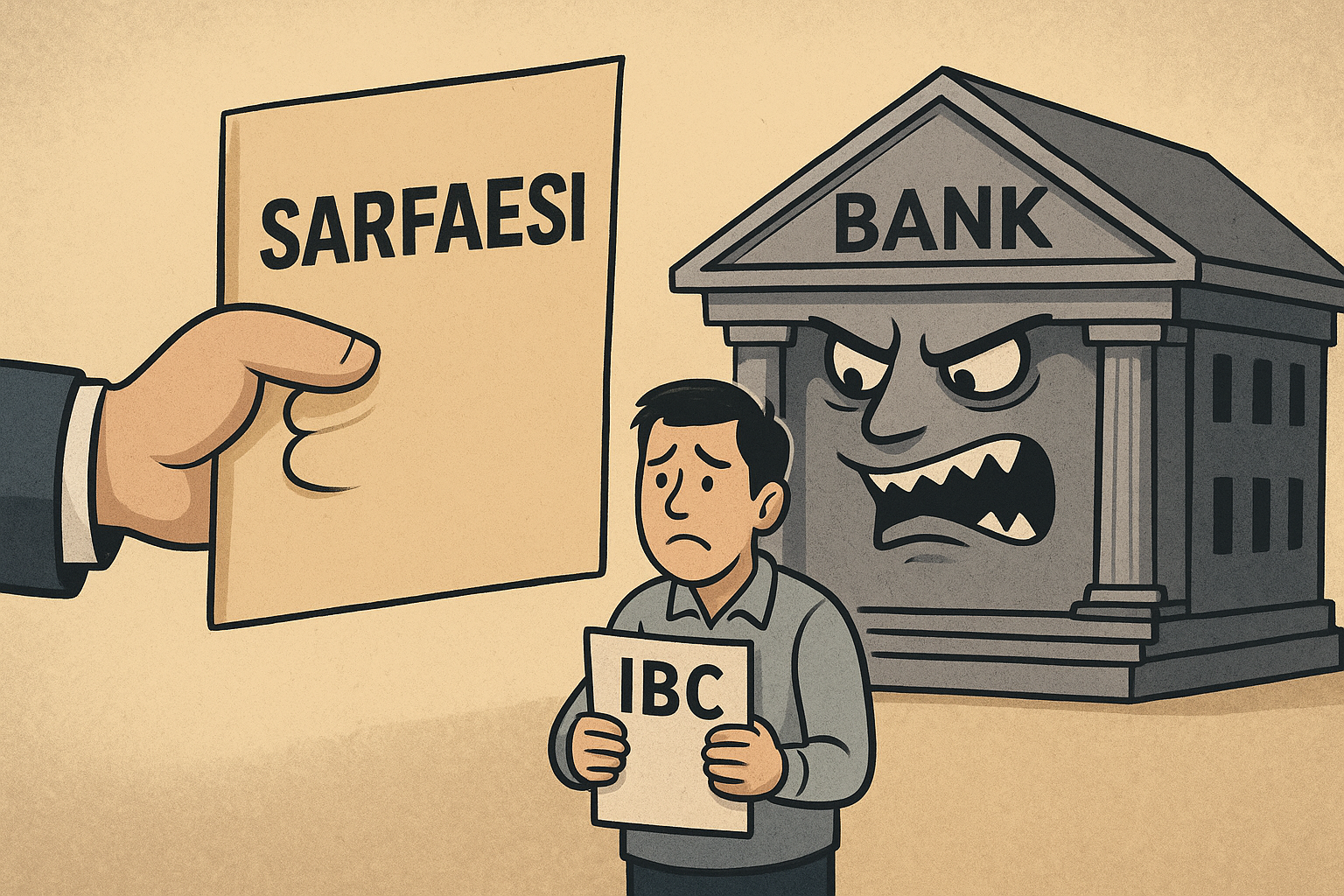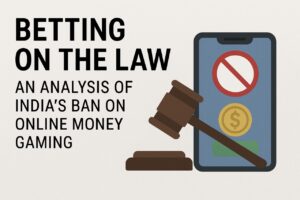If you are reading this with a heavy heart, wondering how a short money problem ended up becoming endless notices, repeated phone calls, and that constant fear of losing your house or business, let me tell you this you are not the only one. Across India, many families and small business owners who once borrowed honestly and in good faith now find themselves stuck under the heavy machinery of recovery actions. These are usually done by banks using the SARFAESI Act or the Insolvency and Bankruptcy Code (IBC).
Now, the thing is, when these laws were first made, the idea was not bad. In fact, it sounded good. The plan was to make recovery faster, to stop big delays in courts, and to bring some discipline in how money was lent and paid back. But what looks good on paper often feels very different in real life. What happens many times is that the person at the centre the borrower, the human being, is completely forgotten. Instead of balance, what remains is stress, lost sleep, and that suffocating feeling that life is falling apart.
Take the SARFAESI Act for example. It allows banks, after giving a 60-day notice, to take over secured assets directly, without waiting for a judge to decide first. And the IBC was supposed to be a time-bound process so companies in financial trouble could either be saved or, if not possible, closed in an organised way. On paper, yes, both sound neat and efficient. But in practice, the power these give to banks is very one-sided. And sadly, that power is often used in ways that don’t care about the borrower’s situation.
Banks, in their hurry to show better balance sheets or to meet targets, act too fast. Accounts are sometimes labelled as non-performing without proper patience. Requests for restructuring are ignored. Auctions or possessions are pushed ahead before the borrower even gets a fair chance. Notices are often sent in a mechanical manner, valuations are done at very low distress levels, and auctions happen without much transparency. The borrower, already under pressure, ends up losing not just property or money but also dignity.
And behind each of these so-called “defaults” is usually a story that nobody hears. Maybe a business lost orders because of a sudden change in government policy. Maybe a trader’s supply chain collapsed during the lockdown. Maybe a family spent everything on medical treatment. Or maybe a farmer saw his crop destroyed by flood or drought. None of these are acts of laziness or cheating. They are things no one can control.
But when the bank looks at such a person and labels them as if they are wilfully refusing to pay, the damage is not only financial. It eats into the person’s social life, family life, and mental health. Parents feel embarrassed in front of society, children sense the tension at home, and the borrower carries heavy guilt. The truth is, many of these people are not running away from responsibility. They just need more time and some understanding to get back on track.
This was especially visible during force majeure events like COVID-19. Practically overnight, businesses stopped, incomes disappeared, and uncertainty stretched on for months. Even the Reserve Bank of India accepted this reality. That is why it allowed moratoriums on instalments and later created special frameworks to restructure loans.
But despite that, several banks continued with recovery as if nothing unusual had happened. Notices were issued, demands were made, and borrowers were cornered into paying what they simply did not have. This is against the spirit of the law itself. The whole point is to recognise that in extreme situations, temporary non-payment is not avoidance it is survival. In such times, relief or restructuring should come first, not enforcement.
Even under the law, process is important. For SARFAESI, the bank must give sixty days’ notice, clearly state the dues, and actually consider any reply from the borrower. Only if the reply is rejected with reasons can the bank move forward with taking possession or auctioning the asset. And even then, the valuation should be fair, the auction should be transparent, and reserve prices cannot be set unreasonably low. Yet in many cases, objections are dismissed with one-line answers, hearings are hardly meaningful, and sales are done at throwaway prices. Courts have said again and again that this is not acceptable, reminding banks that borrowers also have rights.
The same story repeats under the IBC. Many creditors jump to file insolvency applications the moment there is a default, as though a single missed payment proves that the business is dead. But insolvency is not the same as a short-term cash crunch. Lots of companies are healthy in the long run but face short-term liquidity problems maybe a client delayed payment, maybe the market suddenly shifted, or maybe new regulations hit them.
The Supreme Court has made it clear that tribunals should not simply act as rubber stamps for creditors. They are supposed to check whether there is a genuine dispute, or whether revival of the business is possible. But sadly, many small and medium enterprises still get dragged into insolvency too early. It is not because they cannot survive, but because creditors find the IBC an easy weapon to pressure repayment.
This is where the suffering of MSMEs becomes most painful. MSMEs are the backbone of India’s economy. They create jobs, support small towns and communities, and yet, they are the most exposed to shocks. Recognising this, the government and RBI even created special relief measures for them, including simpler restructuring frameworks.
But in reality, banks often skip these measures and choose the harshest action instead. You hear of factories built over 20 or 30 years being auctioned within weeks. This does not just end a business it destroys the lives of workers, suppliers, and whole families linked to it.
Still, borrowers are not completely helpless. The law does provide ways to fight back. Under SARFAESI, one can go to the Debts Recovery Tribunal to challenge wrongful actions, point out mistakes in procedure, and ask for protection against possession or auction. Under IBC, a borrower can argue against admission if the business is basically solvent or if the debt itself is disputed.
Courts too have stepped in whenever they find that banks acted mechanically, gave faulty notices, or carried out shady valuations. Outside courts, there are also restructuring frameworks that borrowers, especially MSMEs, can use to avoid liquidation.
So, even when it feels like the walls are closing in, the truth is that there are still options. Borrowers may feel cornered, but with the right steps seeking relief, pointing out errors, using the remedies provided—they can push back, protect their property, and keep some dignity intact.
– By Aniket Anand



